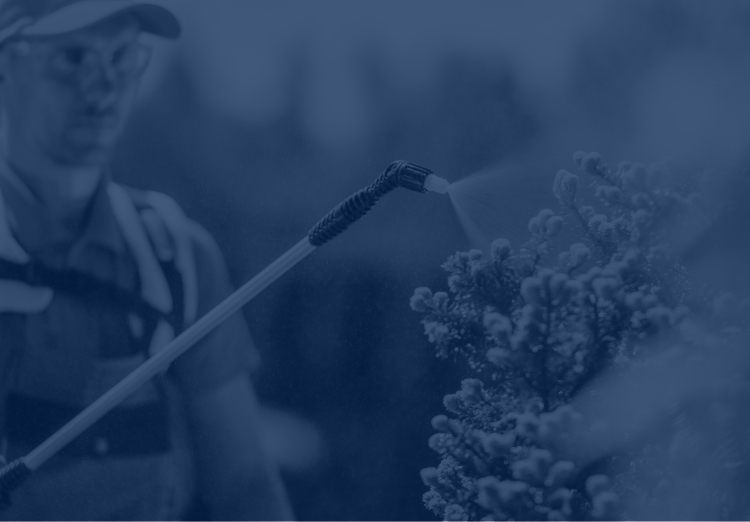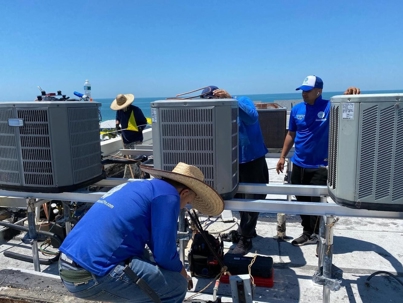Air conditioning systems are essential for maintaining a comfortable indoor climate, especially during the hot summer. However, understanding the cooling process post-repair becomes crucial when these systems require repairs. Homeowners who know what to expect after an AC repair can better manage their indoor environment and ensure the efficiency of their systems. This guide delves into various factors influencing cooling time after an AC repair in St. Petersburg, assessing repair success and strategies to expedite cooling. Moreover, we will highlight Momentum AC & Electric as a reliable service provider for your air conditioning needs.
The Importance of Understanding Post-Repair Cooling Time
It is vital to know the time it takes for your home to cool down after an AC repair:
- It helps manage comfort levels.
- Understanding this process can help determine whether a repair was successful or if additional assistance is needed.
- Recognizing related factors can help prevent unnecessary HVAC costs and improve home energy efficiency.
Factors Impacting Cooling Efficiency After AC Repairs
Many different elements can impact the speed and effectiveness of cooling after an AC repair. Key factors include the type of repair performed, the size of your home, weather conditions, and the age and efficiency of your AC unit. In the following sections, we will explore these factors in more detail.
Initial Assessment: Before Cooling Begins
Before you rush to turn down the thermostat, assessing several factors concerning the AC repair is essential.
Confirming AC Repair Success
The first step is confirming that the repairs have been successful. You should check for consistent airflow and ensure the unit turns on and off without issues. If problems persist after the repair, do not hesitate to contact Momentum AC & Electric for further evaluation.
System Restart Time
After repairs, AC systems may need some time to restart correctly. Typically, it can take 10 to 30 minutes for the system to stabilize and begin effectively cooling the space. Patience is critical during this period.
Immediate Signs of Effective Cooling
Look for signs of effective cooling soon after the system is activated. Within the first few hours, you should feel a noticeable drop in temperature and the air feeling cooler.
When to Call the Technician Again
If your system fails to cool as expected or if you notice unusual noises or odours, you should contact a technician promptly. Detecting issues sooner can lead to less damage and lower repair costs.
Understanding Cooling Time After AC Repair
Cooling time can vary widely based on several situational factors.
Average Cooling Time for Residential Spaces
On average, a residential air conditioning system can take 3 to 6 hours to cool a home adequately after a minor repair. For more complex issues, it can take several hours or days, especially if parts have to be replaced.
Factors Influencing Cooling Time
Different factors come into play when estimating cooling time.
Size of the House
Larger homes typically take longer to cool due to the increased volume of air that needs to be conditioned.
Insulation Quality
Homes with poor insulation will experience greater heat exchange, making it difficult for the AC to maintain a consistent internal temperature.
Weather Conditions
Outdoor environmental factors, including humidity and temperature, can significantly affect how quickly a home cools down. For instance, high humidity can slow down the cooling process.
Age and Efficiency of the AC Unit
Older units may take longer to cool down compared to modern, energy-efficient models. Regular maintenance can enhance efficiency and reduce cooling time.
Cooling a Room vs. Cooling the Entire House
It’s also important to differentiate between cooling a single room and an entire house. Targeted cooling, such as in a bedroom while the doors remain closed, will often be quicker than cooling multiple open spaces.
External Factors Impacting Cooling Time
Several external elements can influence your home’s cooling efficiency post-repair.
Ambient Outdoor Temperature
The temperature outside can drastically affect indoor cooling efforts. A boiling outdoor temperature will place additional strain on your AC unit.
Humidity Levels
High humidity levels pose additional challenges for your AC unit. When moisture levels are high, the air conditioning system must work harder to dehumidify and cool the air.
Time of Day for AC Operation
Cooling efficiency can vary by time of day. Running your AC during more relaxed evenings or early mornings, when outdoor temperatures are lower, is often more effective.
Thermostat Settings and Calibration
Ensure your thermostat is set correctly. Adjusting the thermostat to a lower setting than needed can overwork your unit and hinder its efficiency. It is best to put the thermostat to a comfortable temperature and allow the unit to adjust naturally.
Types of AC Repairs and Their Impact on Cooling Time
Different types of repairs can lead to varying cooling times.
Minor Repairs (Filter Changes, Refrigerant Top-ups)
Minor repairs usually allow for quicker recovery, and homeowners can generally expect standard cooling within a few hours.
Moderate Repairs (Thermostat Issues, Small Leaks)
Moderate repairs may extend the cooling time by a day or two. System performance evaluation will guide further action.
Major Repairs (Compressor Replacement, Ductwork Fixes)
Major repairs can significantly impact cooling time, potentially taking several days for the system to recover fully and operate efficiently again6.
AC Unit Types and Cooling Efficiency Post-Repair
Different types of air conditioning units have their unique cooling metrics post-repair.
Central Air Conditioning Units
Central air units are generally designed to cool larger spaces, but they can be slower to recover if extensive repairs are needed.
Ductless Mini-Split Systems
Ductless systems often cool rooms independently and recover quickly after minor repairs, but extensive work can still lead to delays.
Window and Portable AC Units
These more localized units often cool a space effectively and may return to regular operation soon after reactivation.
Smart vs. Conventional Systems
Intelligent air conditioning systems can optimize cooling schedules based on usage patterns, enabling quicker responses to repairs or malfunctions.
Strategies to Speed Up the Cooling Process
Several strategies can help mitigate cooling time post-repair.
Closing Curtains and Blinds
Keep curtains and blinds closed during the hottest parts of the day to prevent additional heat from entering your home.
Using Fans to Improve Air Circulation
Ceiling and oscillating fans can help distribute cool air evenly throughout your home, improving comfort levels.
Avoiding Heat-Generating Appliances
Avoid using ovens, stovetops, and other appliances that produce heat while your AC is working to cool your home.
Sealing Drafts and Cracks
Ensure windows and doors are correctly sealed to prevent hot air from entering and cool air from escaping.
Common Mistakes to Avoid After AC Repair
Homeowners can inadvertently sabotage cooling efforts by making common mistakes.
Overworking the AC with Low Thermostat Settings
Setting the thermostat to an unreasonably low temperature will strain the system and may result in overheating.
Ignoring Air Filter Maintenance
Regularly changing the air filter improves air flow and efficiency. Neglecting this can lead to reduced cooling performance.
Neglecting Regular System Inspections
Scheduled maintenance is vital for long-term efficiency and performance. Regular inspections can identify potential problems before they lead to costly repairs.
When to Expect Full Cooling Efficiency
Understanding the timeline for full cooling efficiency post-repair is essential.
Same-Day Cooling vs. Full Optimization
While you might start feeling cooler within hours, complete optimization may take longer, depending on the extent of the repairs.
How Long Before Normal Operation Is Restored?
Typically, full functionality can be expected within a few hours to a few days, but regular monitoring is encouraged.
What to Do if the House Isn’t Cooling Properly?
If your home remains warm despite repairs, promptly contacting your technician is crucial for diagnosing potential issues that may still exist.
Additional Considerations for Long-Term Cooling Efficiency
Several long-term strategies can enhance overall cooling efficiency.
Regular Maintenance Post-Repair
Consistent maintenance following repairs will keep your system running smoothly and efficiently.
Upgrading Old AC Units for Better Efficiency
Older air conditioning models may no longer meet energy efficiency standards. Consider investing in a new, high-efficiency unit from Momentum AC & Electric.
The Role of Smart Thermostats
Smart thermostats can adjust temperatures and learning patterns intelligently to maintain comfortable conditions with minimal energy use.
Conclusion
Understanding the factors affecting cooling time after an AC repair is crucial for maintaining a comfortable home. Factors such as the type of repair, weather conditions, and the characteristics of your HVAC system all influence cooling efficiency.
What Affects Cooling Time Post-Repair?
Key factors affecting cooling time include the repairs performed, house size, insulation quality, and external conditions like outdoor temperature and humidity.
Maintain Optimal AC Performance in the Long Run
Investing in regular maintenance and potentially upgrading outdated systems can significantly enhance your home’s cooling efficiency for years.
FAQs
How Long Should It Take for My House to Cool Down After AC Repair?
Depending on the repair complexity, cooling is expected to last from a few hours to a few days,
Can Weather Conditions Affect Cooling Time After Repairs?
Yes, high temperatures and humidity can significantly slow down the cooling process.
Is It Normal for the AC to Run Constantly After a Repair?
While it may take time to cool down, constant running may indicate a problem that needs immediate attention.
What Should I Do If My House Is Hot After an AC Repair?
Contact your technician for further assistance in diagnosing the problem.
How Can I Tell If My AC Repair Was Successful?
Monitor the temperature adjustments and airflow; the repair was likely successful if the system cooled effectively.

